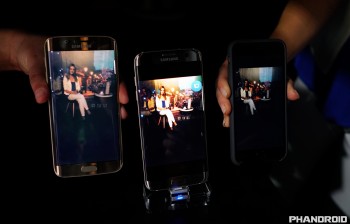
Watch the Galaxy S7 destroy the iPhone 6S in a low light camera shoot out [VIDEO]
(click to enlarge)
While some could argue that there isn’t a huge difference between the newly announced Samsung Galaxy S7 and its older sibling — last year’s Galaxy S6 — it’s hard to argue that the latest iteration in Samsung’s Galaxy S lineup didn’t receive a significant upgrade in the camera department. Tackling the 2 biggest challenges modern smartphone cameras face, Samsung was able to build a camera that, not only takes a better photo in low light, but can focus faster in these normally challenging situations as well.
They did this by using a larger f1.7 aperture lens and something they’re calling a “Dual Pixel” system. With a new Sony IMX260 camera sensor that captures more light by using larger 1.4μm pixels (at the cost of less megapixels), Samsung says the Galaxy S7 is capable of capturing 95% more light than the IMX240 sensor found in the Galaxy S6. The Galaxy S7 camera also uses all of the 12 million pixels to act as focus pixels, a feature you typically only find in full-sized DSLRs (phase detection auto focus). The end result is faster, more accurate auto-focus — 3 times faster than on the Galaxy S6 — and exceptional low light picture quality.
Still don’t believe the hype? Located in Samsung’s huge MWC 2016 booth, the Korean manufacturer showcased the new low light capabilities of the Galaxy S7 by allowing us to see it for ourselves. They did this in a dark room that was so dimly lit, we had trouble seeing anything in there with our own eyes. See what happens when the Samsung Galaxy S7 goes up against last year’s Galaxy S6, and the Apple iPhone 6S in a lighting situation you’d have to be crazy to even attempt to shoot with a smartphone. We think the results speak for themselves.
Full Size Images
From left to right: Samsung Galaxy S6 Edge Plus, Samsung Galaxy S7 Edge, Apple iPhone 6S